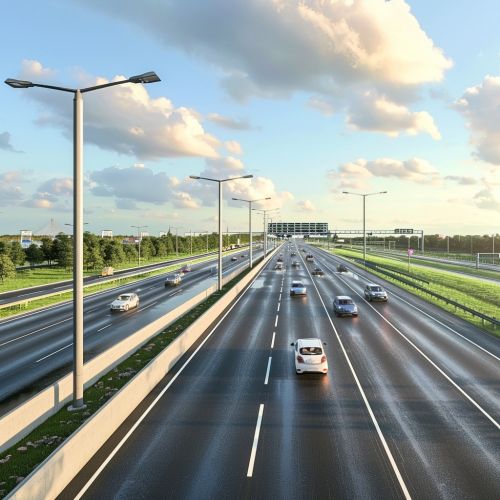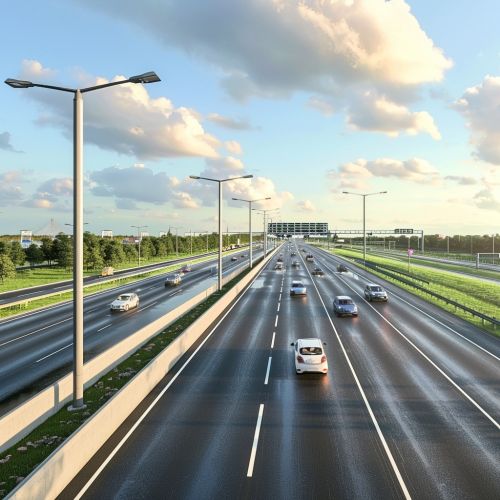Transportation infrastructure
Introduction
Transportation infrastructure refers to the framework that supports the movement of people, goods, and services. It encompasses a wide range of facilities and systems, including roads, bridges, tunnels, railways, airports, seaports, and public transit systems. This infrastructure is critical for economic development, social integration, and the overall functioning of modern societies.
Historical Development
The development of transportation infrastructure has evolved significantly over time. In ancient civilizations, rudimentary roads and waterways facilitated trade and communication. The Roman Empire is renowned for its extensive network of roads, which were crucial for military and administrative efficiency. The Industrial Revolution marked a significant turning point, with the advent of railways and steamships revolutionizing transportation.
Types of Transportation Infrastructure
Roadways
Roadways are one of the most common forms of transportation infrastructure. They include highways, streets, and local roads, designed to accommodate various types of vehicles. Modern roadways are engineered with multiple layers, including a subgrade, subbase, base, and surface layer, to ensure durability and safety.


Railways
Railways are critical for both passenger and freight transport. They consist of tracks, stations, and supporting structures like bridges and tunnels. High-speed rail systems, such as Japan's Shinkansen, have significantly reduced travel times between major cities.
Airports
Airports are complex facilities that include runways, taxiways, terminals, and control towers. They are designed to handle large volumes of air traffic and provide essential services such as baggage handling, customs, and security.
Seaports
Seaports are vital for international trade, providing facilities for the docking, loading, and unloading of ships. They include container terminals, bulk cargo terminals, and specialized facilities for handling hazardous materials.
Public Transit Systems
Public transit systems include buses, trams, subways, and light rail. These systems are essential for reducing traffic congestion and providing affordable transportation options for urban populations.
Design and Engineering
The design and engineering of transportation infrastructure involve multiple disciplines, including civil engineering, urban planning, and environmental science. Key considerations include load-bearing capacity, durability, safety, and environmental impact. Advanced technologies such as Building Information Modeling (BIM) and Geographic Information Systems (GIS) are increasingly used in the planning and design phases.
Maintenance and Management
Effective maintenance and management are crucial for the longevity and reliability of transportation infrastructure. This includes routine inspections, repairs, and upgrades. Asset management systems help in tracking the condition and performance of infrastructure components, enabling timely interventions.
Economic and Social Impact
Transportation infrastructure has a profound impact on economic development and social well-being. Efficient transportation systems reduce travel time and costs, facilitate trade, and enhance access to education, healthcare, and employment opportunities. However, the construction and maintenance of such infrastructure require significant financial investment and can have environmental consequences.
Challenges and Future Trends
The transportation sector faces several challenges, including aging infrastructure, funding constraints, and the need for sustainable development. Future trends include the adoption of smart technologies, such as Intelligent Transportation Systems (ITS), and the shift towards greener alternatives like electric vehicles and high-speed rail.
